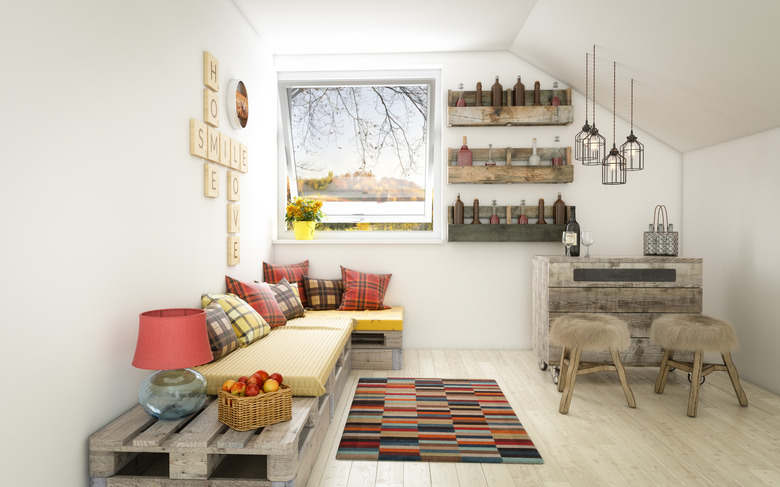Homemade Sectional Sofa
As a furnishing designed to maximize seating space, a sectional sofa is usually the most prominent piece of furniture in any room it occupies. Most consist of two separate sofas that join together to form an L-shape, but if you want to build your own, nothing stops you from making one with two wings to form a C-shape if you're sufficiently ambitious.
There is no shortage of possible frame designs, some more complex than others, but since you're doing the project yourself, it's probably best to keep things simple. The dimensions of your DIY sofa depend on the amount of space you have available, of course, but they also depend on the size of the cushions. It's unlikely you'll be making these yourself, so it's best to buy them before you start the project so you can make the frame to fit.
Making a Sectional Sofa With 2x4s
Making a Sectional Sofa With 2x4s
To make a sectional sofa from 2x4s, you build two long, rectangular frames for the seats of the two sofas and four squarish frames to support them. Three of the support frames need to include armrests, so they need to rise 12 to 18 inches above the seat. One end of the shorter of the two sections has to be left open to fit against the other section, so it shouldn't include an armrest. Cover the seating areas of both sections with 2x4 slats or 3/4-inch plywood.
Both sections need a backrest, and it's more comfortable for sitting if it angles away from the front by about 15 degrees. One way to construct this is to build a rectangular frame for the backrest, attach it to the side supports, and cut angled slats to attach to the top of the frame and the slats or plywood that forms the seat. Glue and screw all pieces together using wood glue and 2 1/2-inch screws. The final product will look neater and more finished if you use pocket screws instead of driving screws directly into the faces of the 2x4s.
Sanding, Staining, and Finishing Your Sofa
Sanding, Staining, and Finishing Your Sofa
Once you've constructed the frame for your new sectional sofa, you'll need to clean up the wood. If you used old, recycled wood, you may want to power wash it to clean off mold and brighten the color. Whether or not you power wash, it's important to sand the entire sofa using 100-grit sandpaper followed by a second pass with 120-grit paper. This not only cleans up the wood but also removes splinters and glue stains and smooths sharp corners.
One of the advantages of building a sofa yourself is that you can stain or paint it any color you want. Choose a color that suits the location and then apply stain with a rag or paint with a paintbrush. If you stain, brush on one or two coats of clear finish to protect the wood. After everything dries, fit the sections together, put on the cushions (which you've already bought), and enjoy your new sofa.
Sectional Sofa Design Options and Tips
Sectional Sofa Design Options and Tips
There are myriad alternative ways to build a sectional sofa yourself, and you may even be able to come up with a few original designs on your own. You can build the sofa from quality bamboo or hardwood-faced 3/4-inch plywood, you can stack old pallets (after first power washing and disinfecting the wood), you can use a combination of wood and steel pipes, or you could even convert an old wooden bed frame.
The keys to making a comfortable couch are to make sure the seat has enough support (which may involve adding extra legs in the middle of the span), making the armrests high enough for comfort but not so high as to make resting your arms an effort, and giving the backrest just enough of an angle to allow you to lean back slightly — but not too far — from the vertical position. An angle of 15 degrees is ideal. Use your cushions as a reference for the width of the seating area and backrest; they should completely cover the wood without overlapping.
